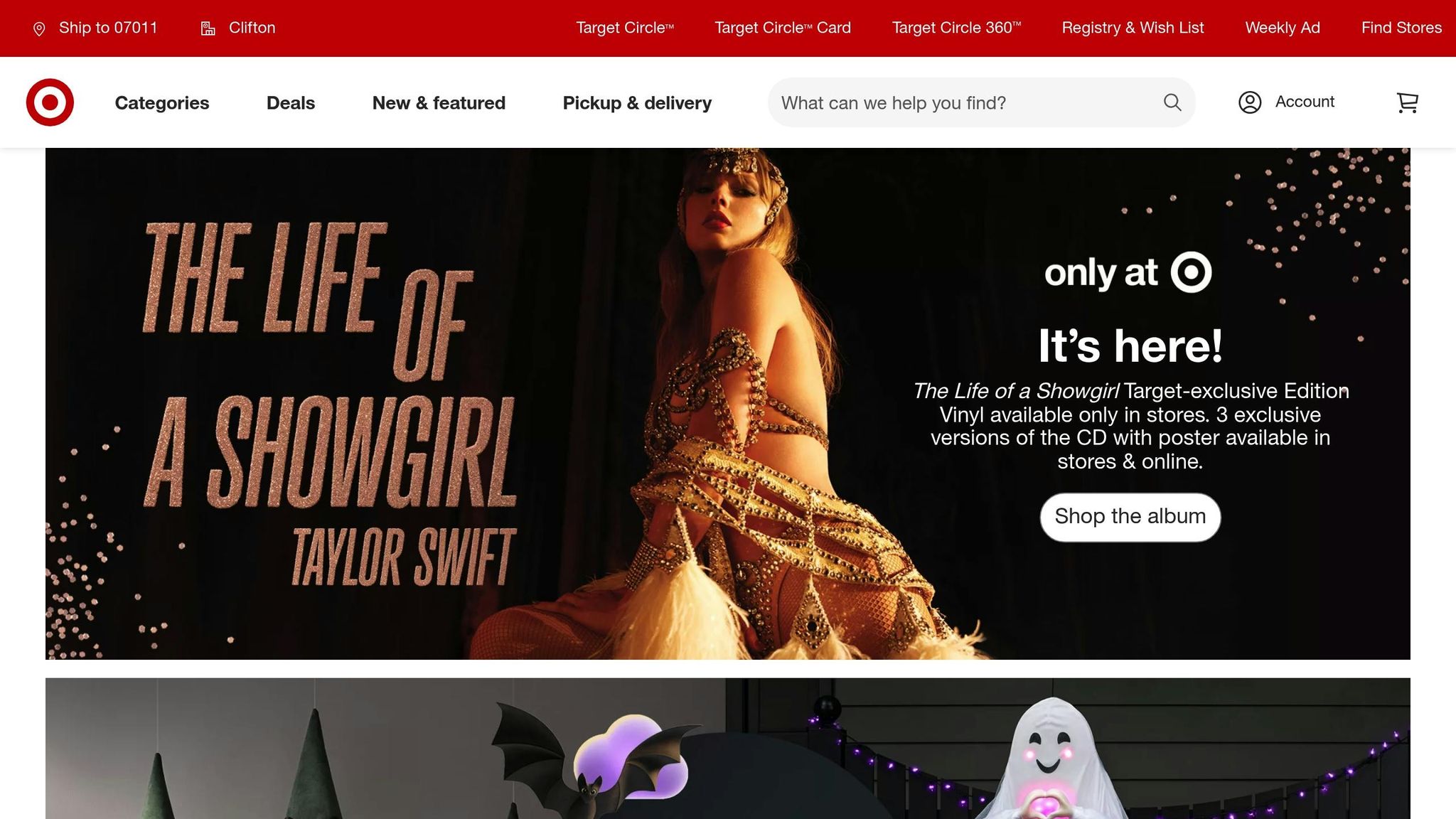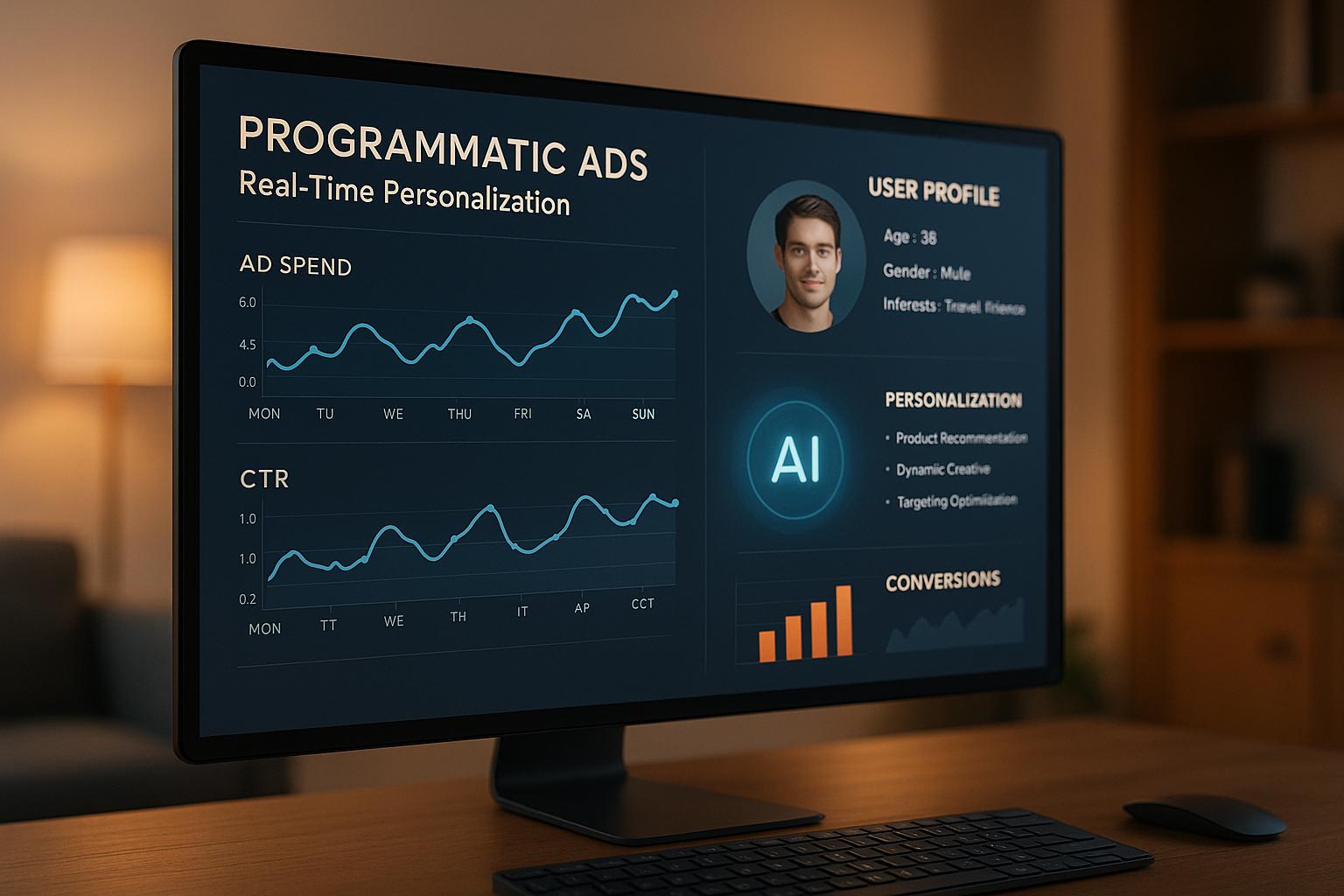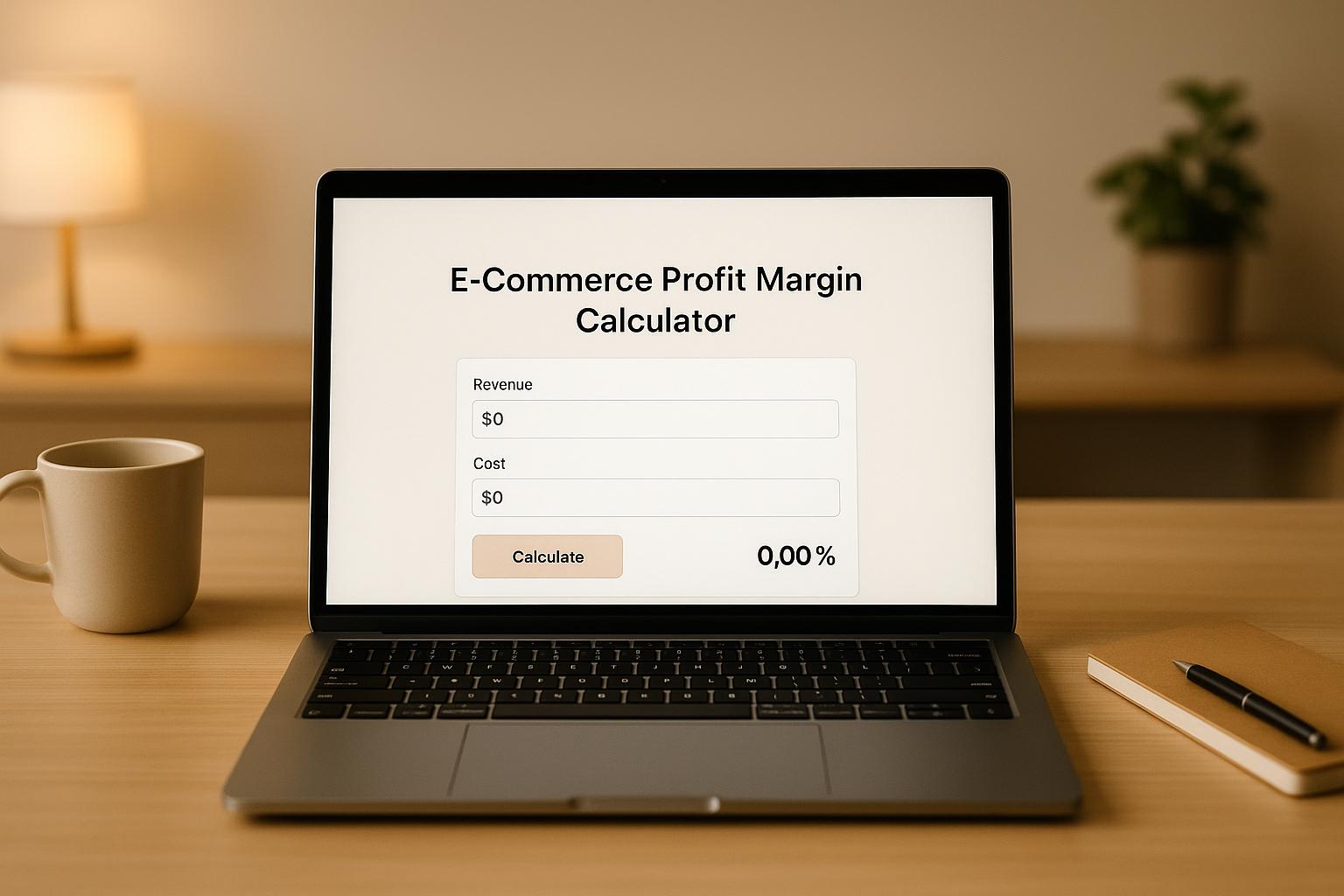How Target ROAS Impacts Shopping Campaigns
Target ROAS (Return on Ad Spend) is a bidding strategy designed to help e-commerce businesses focus on maximizing revenue instead of just increasing traffic. By leveraging Google’s machine learning, it adjusts ad bids in real time based on the likelihood of a conversion and its potential value. This approach prioritizes profitability by allocating more budget to high-value opportunities and scaling back on less promising ones.
Here’s a quick summary of how Target ROAS works and its benefits:
How it works: The system uses historical and real-time data to predict conversion value. Advertisers set a target percentage (e.g., 400% ROAS), and the algorithm adjusts bids to try and achieve that return.
Key requirements: Accurate conversion tracking, at least 15 conversions in the past 30 days, and high-quality product data are necessary for optimal performance.
Who benefits most: Established e-commerce businesses with clear profit goals, diverse product catalogs, and seasonal demand often see the best results.
Performance impact: Campaigns using Target ROAS report a median 35% increase in conversion value and a 19% improvement in ROAS.
While Target ROAS excels in driving consistent returns, it’s not perfect for every scenario. New campaigns or those with inconsistent data may struggle. Alternatives like Maximize Conversion Value and Manual CPC offer different levels of control and automation, catering to varying business needs. Choosing the right strategy depends on your goals, campaign maturity, and available data.
Best Bid Strategies for Google Shopping: Target ROAS, Max Clicks and Manual CPC

How Target ROAS Works in Shopping Campaigns
Target ROAS is an automated bidding strategy powered by Google's machine learning. It adjusts bids in real time to align with your desired return on ad spend (ROAS). For instance, if you set a Target ROAS of 400%, the system aims to generate $4.00 in revenue for every $1.00 spent on ads. But how does it achieve this?
Google's algorithm evaluates a wide range of signals - like device type, location, time of day, browser, operating system, and search behavior - to predict both the likelihood of a conversion and its potential value. Based on these predictions, the system increases bids for high-value opportunities and reduces them for less promising ones.
Accurate conversion tracking is the backbone of this strategy. Your Google Ads account must capture not only conversion events but also the actual revenue generated by each transaction. Without this data, the algorithm can't make the informed decisions necessary to hit your ROAS goals.
Another key factor is historical data. Google suggests having at least 15 conversions in the past 30 days before implementing Target ROAS. This data helps the algorithm make better predictions and adjustments.
This strategy works particularly well for e-commerce businesses with diverse product catalogs and varying price points. The algorithm tends to prioritize high-margin products, ensuring more budget is allocated to items that drive the most profit. Retailers in industries like fashion, electronics, and home goods often see strong results with this approach.
For seasonal businesses, Target ROAS adapts to fluctuations in demand. During high-traffic periods like Black Friday or back-to-school shopping, the system increases bids to capture more conversions. Conversely, it scales back during slower times to avoid overspending.
However, success with Target ROAS depends on maintaining a consistent campaign structure and providing high-quality product feeds. Campaigns with frequent changes in product availability, inconsistent pricing, or incomplete product data can struggle, as the algorithm relies on stable and accurate information for effective optimization.
Geographic targeting also plays a crucial role. The system performs best in areas with ample search volume and conversion history. Campaigns targeting very specific or low-population regions may not generate enough data for the algorithm to optimize effectively.
Finally, the strategy requires a learning period of 2-4 weeks to fine-tune its performance. During this phase, the algorithm tests various bid levels and analyzes conversion patterns. Expect some fluctuations in campaign results as the system gathers data and refines its approach.
Target ROAS is particularly effective for businesses with clear profit margin goals. When companies know their margins, they can set realistic ROAS targets that align with their financial objectives. On the flip side, businesses without defined profitability metrics may struggle to make the most of this strategy.
1. Target ROAS Bidding Strategy
Target ROAS (Return on Ad Spend) is a strategy designed to optimize ad spend by focusing on revenue generation. For e-commerce businesses, it offers clear advantages across performance metrics, revenue efficiency, and specific use cases.
Performance Metrics
When implemented, Target ROAS can impact several key performance indicators for e-commerce campaigns:
Revenue Per Click (RPC): Initially, RPC often improves as the algorithm learns to prioritize clicks likely to generate higher revenue. This refinement ensures ad spend is directed toward more profitable opportunities.
Click-Through Rate (CTR): CTR may decrease early on because the algorithm shifts focus from general traffic to high-intent users. It’s less about volume and more about quality.
Cost Per Acquisition (CPA): CPA might fluctuate at first as the algorithm experiments with bid levels. This is part of the learning process to achieve better long-term efficiency.
Impression Share: The strategy tends to favor premium products, increasing their visibility, while reducing exposure for lower-margin items. This aligns ad spend with profitability goals.
Over time, the quality score of your campaigns can improve. As the algorithm identifies the best-performing product-query matches, it reallocates budget to these areas, enhancing ad relevance and reducing costs per click. This creates a foundation for better revenue efficiency across your campaigns.
Revenue Efficiency
Target ROAS is designed to maximize revenue by adjusting bids in real time based on predicted conversion values. Here’s how it enhances revenue efficiency:
Prioritizing High-Value Transactions: Instead of focusing on high sales volume, this strategy emphasizes high-value conversions, making it especially useful for businesses with varied product catalogs.
Profit Margin Alignment: By setting ROAS targets that match your desired profit margins, you can ensure every advertising dollar contributes effectively to your bottom line.
Seasonal Adjustments: During peak seasons, the algorithm increases bids to capture high-intent traffic, while in slower periods, it scales back to maintain cost efficiency.
Product-Level Optimization: The system identifies which products generate the most revenue per click and allocates more budget to them. Underperforming items receive less exposure until their performance improves.
Geographic Efficiency: The algorithm adjusts bids based on regional performance. For example, urban areas with higher conversion values may see increased bids, while regions with lower order values receive more conservative adjustments.
These built-in efficiencies make Target ROAS a powerful tool for businesses aiming to maximize revenue without overspending.
Best Use Cases
Target ROAS works best for businesses that meet specific criteria:
Established E-Commerce Businesses: Companies with a consistent conversion history and a diverse product range - such as fashion, electronics, or home goods - can benefit greatly. The system distinguishes between high-margin premium items and lower-margin basics.
Seasonal Businesses: This strategy is ideal for businesses with fluctuating demand. For instance, garden supply retailers can set aggressive ROAS targets during peak seasons and take a more conservative approach during off-season periods.
B2B E-Commerce Companies: Businesses with longer sales cycles and higher transaction values can benefit by focusing on conversion value over sheer volume.
That said, Target ROAS may not be suitable for every business. Companies with inconsistent pricing, frequent inventory changes, or unreliable conversion tracking may struggle to see optimal results. This strategy relies heavily on stable and accurate data to perform effectively.
sbb-itb-0bd1697
2. Other Bidding Strategies (Maximize Conversion Value, Manual CPC)
While Target ROAS is a popular choice, Maximize Conversion Value and Manual CPC offer alternative bidding strategies that cater to different business needs. Each approach has its strengths and weaknesses, impacting performance metrics and revenue efficiency in unique ways. Let's break them down.
Performance Metrics
Maximize Conversion Value uses Google's AI to adjust bids in real time, aiming to achieve the highest total conversion value within your budget. For example, one case study found that switching from Manual CPC to Maximize Conversion Value led to a 35% increase in conversion value and a 19% improvement in ROAS [1]. This strategy is particularly effective at uncovering high-value opportunities that might slip past human bidders.
On the other hand, Manual CPC gives you full control over individual bids at the product or ad group level. While this control can be helpful, it often results in lower conversion rates and less efficient cost per conversion, especially in more complex campaigns. Unlike Maximize Conversion Value, Manual CPC doesn’t adapt to real-time signals, which can limit its effectiveness.
As campaigns grow in complexity, the gap between these two strategies becomes more apparent. Maximize Conversion Value can process a wide range of signals - like device type, location, time of day, and user behavior - simultaneously. Manual CPC, however, relies on fixed bid settings, making it harder to keep up with dynamic market conditions.
Revenue Efficiency
Revenue efficiency is another area where these strategies differ significantly.
Maximize Conversion Value focuses on allocating your budget to the highest-value opportunities. By continuously analyzing which searches, products, and user segments drive the most revenue, this strategy adjusts bids dynamically to maximize returns. However, it doesn’t aim for a specific return threshold, like Target ROAS does. While this approach can increase total revenue, it may lead to lower margins on individual transactions.
Manual CPC, in contrast, prioritizes control over efficiency. Advertisers manually set and adjust bids, which can be time-consuming and prone to errors. This method might work well for tight budget management, but it often misses opportunities that automated strategies would capitalize on, especially as the campaign’s complexity increases.
Best Use Cases
Maximize Conversion Value is ideal when your main goal is to boost total revenue rather than focus on specific efficiency targets. It works well for businesses with flexible budgets and ample conversion data. This strategy shines during peak seasons, product launches, or when scaling campaigns, as long as robust conversion tracking is in place.
Manual CPC is better suited for situations where you need precise control over bids, such as when dealing with limited conversion data or highly specialized markets. It’s useful for new campaigns with little historical data, niche products with unique pricing, or testing specific bid levels. However, experts recommend transitioning to automated strategies once you’ve gathered enough conversion data. Historical ROAS can then serve as a benchmark for setting initial targets [1].
| Bidding Strategy | Automation Level | Control | Best For | Limitation |
|---|---|---|---|---|
| Maximize Conversion Value | High | Low | Scaling revenue, flexible budgets | No specific ROAS targeting |
| Manual CPC | None | High | Granular bid control, niche markets | Labor-intensive |
For businesses juggling multiple campaigns, tools like Feedcast.ai can simplify the process. Its AI-powered platform helps e-commerce brands test and optimize both automated and manual strategies, while providing unified analytics to make smarter decisions across advertising channels.
Pros and Cons
When it comes to choosing the right bidding strategy, understanding the strengths and weaknesses of each option is crucial. Your decision should align with your business goals, budget flexibility, and the stage of your campaign.
Target ROAS is all about delivering predictable returns. By automatically adjusting bids to hit specific targets, it simplifies budget planning and adapts swiftly to market changes. However, this strategy can sometimes limit growth. If the targets are too aggressive, the algorithm might overlook valuable traffic. It’s also not ideal for new campaigns, as it relies heavily on established conversion data.
Maximize Conversion Value focuses on driving revenue growth. It’s great at identifying high-value customer segments that manual bidding might miss. The trade-off? Margins can be less predictable. While total revenue might rise, individual transaction profitability can vary, which contrasts with the stability of Target ROAS. This strategy works best when you have flexible profit margins and can handle fluctuating returns.
Manual CPC offers hands-on control, allowing you to set specific bids for high-priority products and respond quickly to competitive changes. This makes it a good fit for businesses with unique pricing models or niche markets. However, it’s time-consuming and less effective for complex campaigns, as human bidders can’t process signals at the same scale as automated systems.
Here’s a quick breakdown to help you decide:
| Bidding Strategy | Key Advantages | Main Disadvantages | Best For |
|---|---|---|---|
| Target ROAS | Predictable returns, automated adjustments, scalable | Needs conversion data; can restrict growth with aggressive targets | Established campaigns with clear profit goals |
| Maximize Conversion Value | High revenue potential; uncovers valuable segments | Unpredictable margins; less control over ROAS | Businesses focusing on growth over efficiency |
| Manual CPC | Full control; quick adjustments; works with limited data | Time-intensive; may miss optimization opportunities | New campaigns, niche markets, or testing phases |
If you’re managing multiple campaigns across various channels, tools like Feedcast.ai can simplify the process. Its AI-powered optimization features let you test different bidding strategies while keeping performance tracking unified. This makes it easier to determine which approach works best for specific products or market conditions.
Ultimately, your bidding strategy should align with your business phase. For new campaigns, start with Manual CPC to test the waters. As you gather data and define profitability targets, transition to Target ROAS. For periods of aggressive growth, Maximize Conversion Value can be a strong choice if your margins allow for flexibility.
Conclusion
Target ROAS shines when applied to mature campaigns with at least 30 days of conversion data and clear profit goals. Its automated bid adjustments help ensure consistent returns, making it a go-to option for businesses aiming for steady profit margins and scalable growth.
For new product launches, starting with Manual CPC is a smart move. It allows you to gather valuable initial insights before transitioning to Target ROAS for automated and more predictable optimization. This comparison highlights the importance of aligning your bidding strategy with the maturity of your campaigns and your broader business objectives.
While Target ROAS emphasizes efficiency and consistent margins, Maximize Conversion Value focuses on driving total revenue growth, even if that means less control over margins. This distinction makes it easier for businesses to decide based on whether they prioritize steady returns or aim for higher revenue potential.
The real takeaway here? Your bidding strategy should match your business phase and goals. New campaigns benefit from manual oversight, established ones thrive with Target ROAS automation, and growth periods can experiment with Maximize Conversion Value if margin flexibility is an option.
Platforms like Feedcast.ai simplify the process of managing multiple bidding strategies. With unified dashboards and AI-driven optimization tools, they help you determine the best approach for specific products or market conditions.
Beyond bidding strategies, factors like product feed quality, campaign structure, and market timing also play a huge role in the success of shopping campaigns. These elements, combined with the right bidding approach, lay the groundwork for ongoing optimization and strategic growth.
FAQs
What is Target ROAS, and how does it compare to other bidding strategies like Maximize Conversion Value and Manual CPC? When should each be used?
Target ROAS (Return on Ad Spend) is a bidding strategy designed to achieve a specific ratio of revenue to ad spend. It adjusts bids to align with your profitability goals, making it a strong choice for businesses that need to keep revenue and costs in balance.
On the other hand, Maximize Conversion Value focuses on driving the highest possible total revenue within your budget. Instead of prioritizing profitability, this strategy emphasizes overall growth, making it a good fit for campaigns looking to scale revenue without strict return requirements. Meanwhile, Manual CPC gives you complete control over individual bids, allowing for precise adjustments. However, this level of control comes with a trade-off - it demands both time and expertise to manage effectively.
To sum it up: go with Target ROAS when profitability is key, Maximize Conversion Value when scaling revenue is the main goal, and Manual CPC when you need detailed, hands-on control over your campaign.
What do you need to successfully use a Target ROAS strategy in shopping campaigns?
To make the most out of a Target ROAS (Return on Ad Spend) strategy in shopping campaigns, you'll need a solid foundation of conversion data - ideally, at least 15 conversions over the past 30 days. This gives the algorithm enough information to fine-tune performance effectively.
Setting a realistic, data-backed target ROAS is equally important. Base it on your current performance metrics and profit margins to ensure it aligns with your business goals. And don’t forget: accurate conversion tracking is critical. It allows you to measure results properly and make smart adjustments when needed.
How can businesses refine their product feeds and campaign setup to achieve better results with a Target ROAS strategy?
To make a Target ROAS strategy work better, businesses should fine-tune their product feeds and campaign setups. Start by improving product titles, descriptions, and categories with relevant keywords. Also, make sure your product images are clear and visually appealing. Well-optimized product data can boost visibility and make your campaigns more effective.
Group your campaigns in a way that makes sense - like by product type, price range, or custom labels. This helps with more precise bidding and targeting. Use past performance data to set realistic ROAS targets, and keep a close eye on bids and budgets to ensure they stay aligned with your goals. Don’t forget to set up accurate conversion tracking and avoid overlapping campaigns to keep things running smoothly and maximize your returns.
Yohann B.




